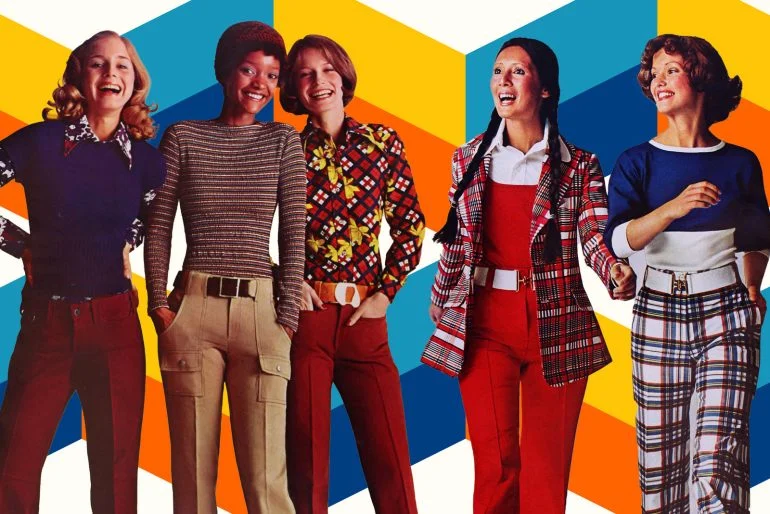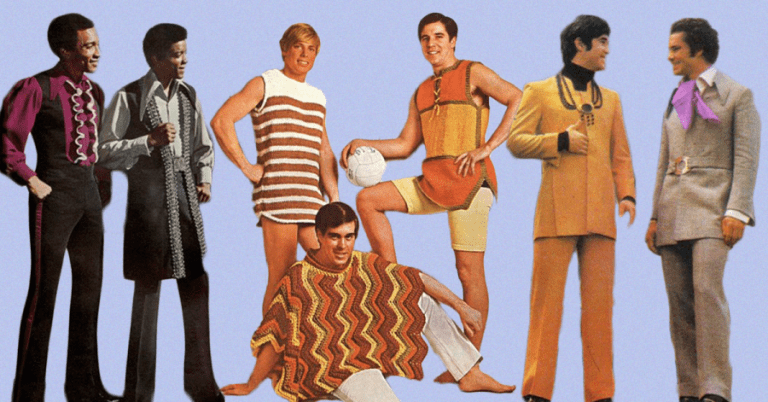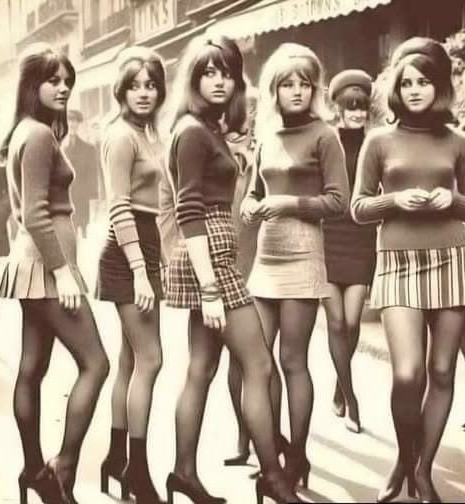The 1970s was a defining decade in fashion, leaving a legacy that continues to influence modern style. It was an era of individuality, glamour, and creative freedom, where bold new trends fused with vintage aesthetics to create unforgettable fashion moments. From disco sparkle to effortless casualwear, the styles of the ‘70s remain iconic, shaping everything from high fashion to everyday wardrobes.
Let’s explore the major fashion movements of the time and how they still make an impact today.
The Rise of Effortless Glamour: Where Comfort Meets Style
The early 1970s marked a dramatic shift away from the structured, restrictive clothing of the past. Unlike the tailored silhouettes of the 1950s and ‘60s, the ‘70s prioritized comfort without sacrificing style.
Women embraced loose, flowing fabrics, wide-legged trousers, and maxi dresses that allowed them to move freely while looking effortlessly elegant. Fashion became a reflection of the broader cultural changes of the time—moving towards freedom, self-expression, and ease.
This shift set the foundation for today’s athleisure movement, proving that style and comfort can go hand in hand.
Style Icons Who Defined the ‘70s
Several women emerged as fashion trailblazers during the decade, setting trends that are still admired today:

Diana Ross (1970): A true disco queen, Diana Ross stunned in bronze satin gowns and shimmering fabrics, embodying the decade’s glamorous essence.
Bianca Jagger at Studio 54: Her daring metallic lamé dresses and power suits set the tone for bold, fearless fashion.
Goldie Hawn’s Playful Chic: With her bohemian-inspired wardrobe, Goldie Hawn brought a carefree, youthful charm to ‘70s fashion.
These icons weren’t just stylish—they represented a generation of confidence, independence, and boundary-pushing fashion.
Disco Fever: The Era of Bold Glamour
By the mid-1970s, disco culture had taken over, bringing with it an explosion of glitz and extravagance. Studio 54, New York’s legendary nightclub, became the epicenter of daring fashion statements.
✨ Sequin-covered dresses that shined under the dance floor lights
✨ Plunging necklines and halter tops for an alluring, sleek look
✨ Sky-high platform shoes that added extra drama
Disco wasn’t just about the clothes—it was about the attitude. The fashion celebrated freedom, rebellion, and self-expression, setting the stage for modern party wear and red carpet glamour.
The Birth of Casual Chic & Sportswear in Everyday Fashion
While disco ruled the nightlife, a more relaxed, effortless style began to dominate daytime fashion. Designers like Halston and Calvin Klein introduced chic, minimalistic outfits that were both stylish and practical.
Halston’s Ultrasuede Separates: Luxurious yet understated, these soft, easy-to-wear pieces became a wardrobe essential.
Calvin Klein’s Satin Slips & Jersey Dresses: The epitome of understated elegance, Klein’s designs championed simplicity over excess.
The ‘70s casual-chic aesthetic laid the foundation for modern fashion, inspiring today’s minimalist street style and athleisure trends.
Denim’s Rise: From Workwear to High Fashion
The 1970s saw denim evolve from functional workwear to a fashion staple. What once symbolized rebellion became a mainstream wardrobe essential, with brands like Levi’s and Wrangler leading the charge.
Luxury designers also embraced denim:
Calvin Klein’s Designer Jeans (1973): Klein revolutionized denim, turning it into a symbol of effortless sophistication.
Fiorucci’s Stretch Denim: By incorporating stretch fabrics, Fiorucci made jeans more flattering and comfortable, paving the way for today’s skinny jeans and jeggings.
Even now, high-waisted flares, denim jackets, and distressed jeans continue to dominate fashion trends.
Polyester: The Fabric That Defined the Decade
Polyester became the go-to fabric of the ‘70s, celebrated for being affordable, durable, and wrinkle-free. Whether in vibrant patterned dresses or tailored suits, polyester allowed fashion to be both practical and stylish.
✨ Machine-washable suits meant busy women could stay polished with ease.
✨ Bright polyester dresses brought fun, bold prints into everyday fashion.
While the fabric later faced criticism for being synthetic, in the ‘70s, it was considered revolutionary, making high fashion more accessible than ever.
Boho Meets Tailoring: A Fusion of Opposites
The ‘70s was a decade of contrasts, where bohemian fashion and structured tailoring coexisted harmoniously.

Jackie Kennedy’s Tailored Trousers & Turtlenecks: A symbol of sophisticated minimalism, Jackie O’s wardrobe showcased the polished, refined side of ‘70s fashion.
The Rise of Bohemian Style: On the other end of the spectrum, flowy maxi dresses, peasant blouses, and fringe details embodied individuality and artistic freedom.
This fusion of boho charm and tailored elegance continues to inspire modern fashion trends, from festival wear to corporate chic.
The Lasting Impact of 1970s Fashion
The 1970s wasn’t just a decade of style—it was a period that transformed fashion forever. It introduced:
✔️ The balance between comfort and style
✔️ A rebellious, expressive approach to clothing
✔️ Fashion as a statement of individuality
From disco nights to effortless daywear, designer denim to bohemian elegance, the legacy of the ‘70s continues to shape what we wear today.
So the next time you slip into high-waisted jeans, a boho maxi dress, or a sleek jumpsuit, remember—you’re embracing a timeless fashion revolution that will never go out of style. ✨
